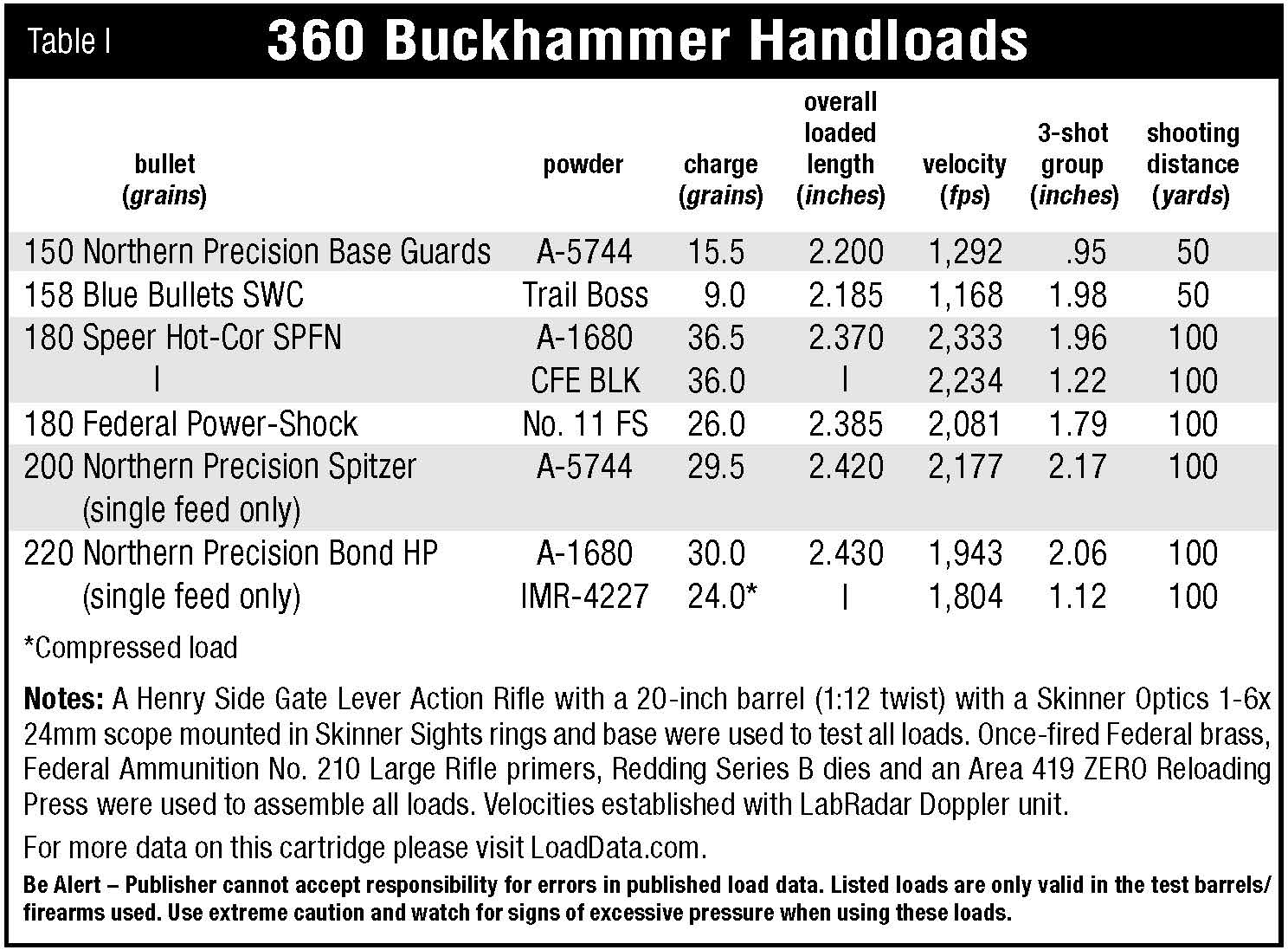Henry's Side Gate Lever Rifle in 360 Buckhammer
A Gorgeous Rifle and a Serious Cartridge
feature By: S. Maroon | July, 24
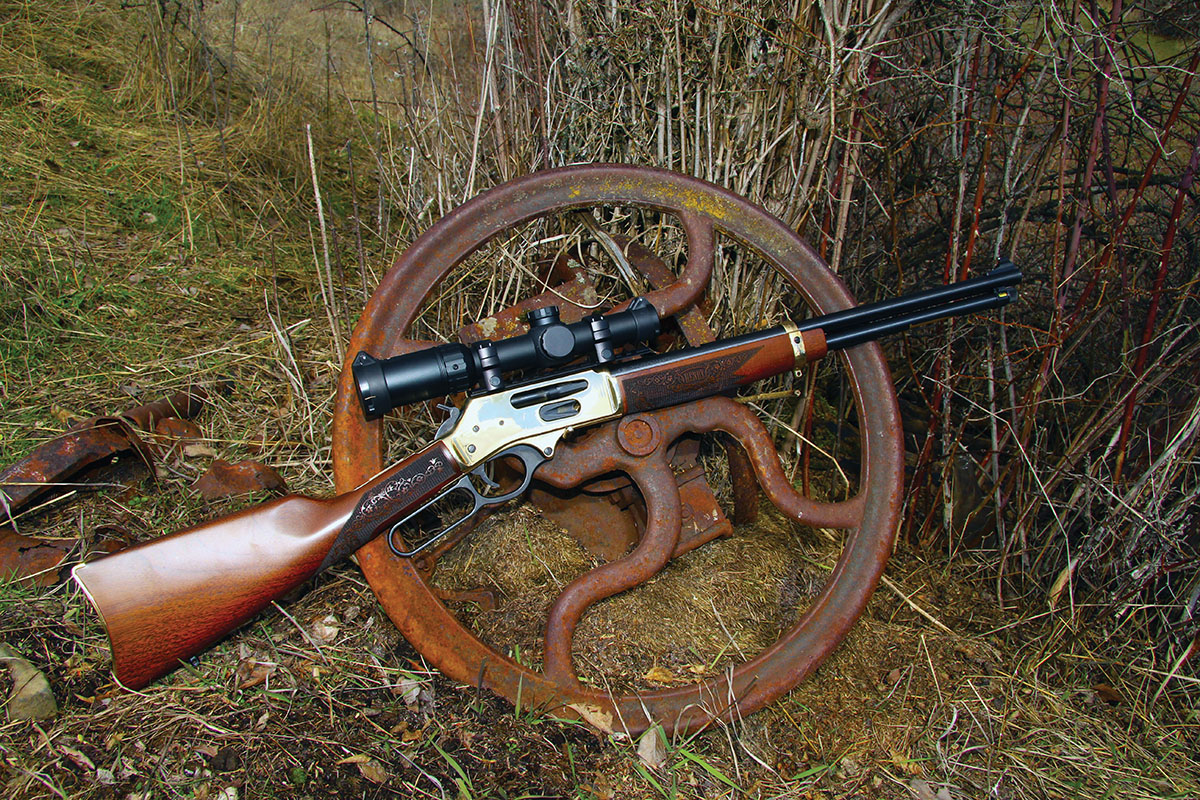
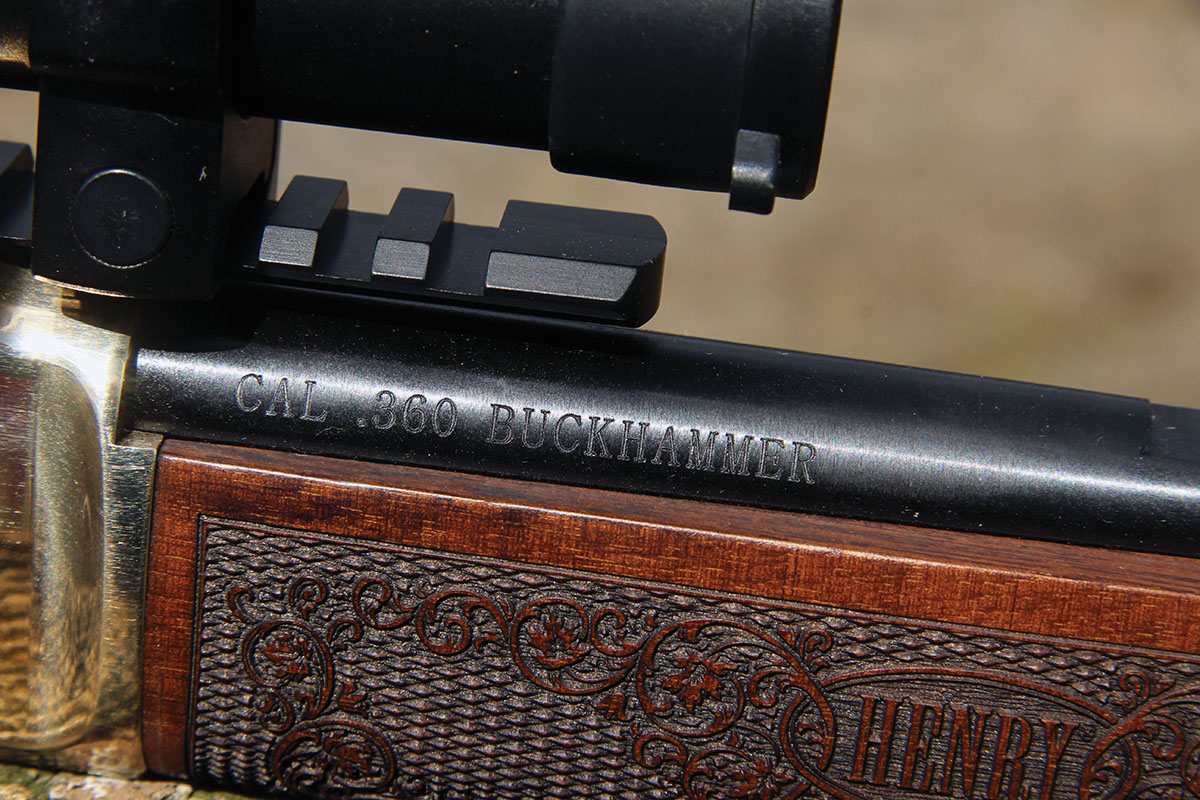
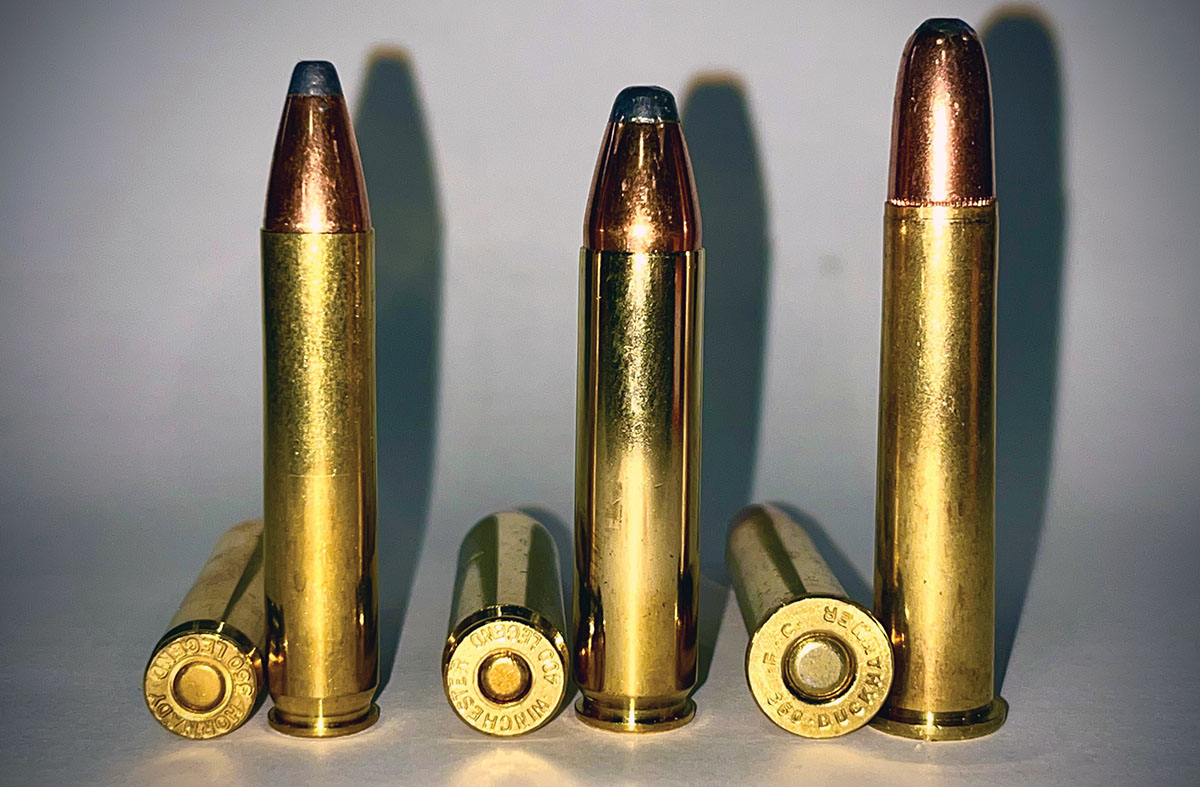
Not content to be left out, the newest cartridge trend, Remington Arms, in partnership with Henry Repeating Arms, responded with the 360 Buckhammer – essentially the venerable 30-30 Winchester blown out to include straight walls and to hold .358-caliber bullets used in cartridges like the 35 Remington and 35 Whelen. The Sporting Arms and Ammunition Manufacturers’ Institute (SAAMI) gave the 360 Buckhammer its blessing early in 2023, making this one of the newest cartridges around.
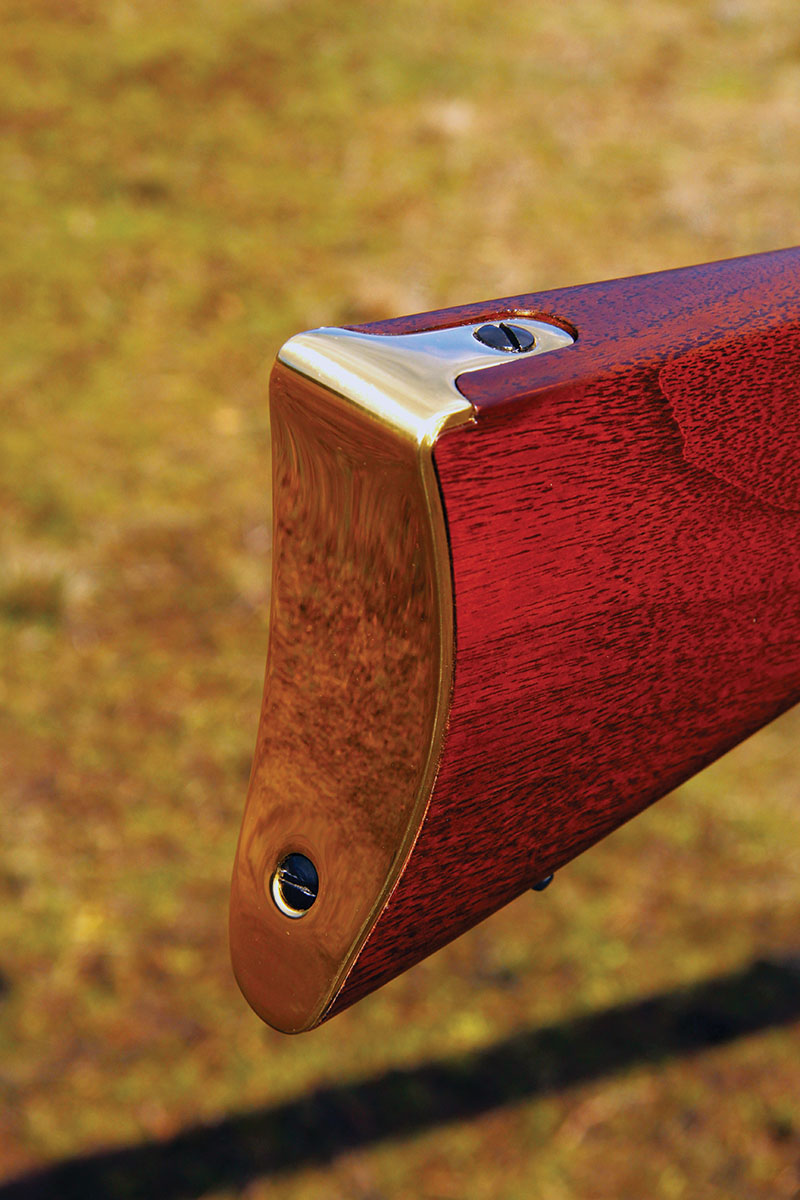
Winchester’s 350 Legend emerged to answer the demand for flatter trajectories, the 400 Legend provided that in combination with a bit more energy delivery. Remington’s 360 Buckhammer gives a little bit more of each. The Buckhammer resembles the classic 375 Winchester but is a bit slimmer. The 360 Buckhammer starts with a common 30-30 case, as mentioned, shortened to 1.80 inches and necked slightly to accept .358-caliber bullets.
Remington Ammunition offers 180- and 200-grain Core-Lokt rounds at 2,399 feet per second (fps) and 2,217 fps, respectively. Federal 180- and 200-grain Power-Shock loads exit the muzzle at essentially the same velocities. These are classic roundnose/softnose bullets compatible with levergun tubular magazines. Remington’s 180-grain load produced 2,300 foot-pounds of muzzle energy and retained 969 foot-pounds of kinetic energy (KE) at 200 yards, the 200-grain load 2,183 foot-pounds of muzzle energy and 914 foot-pounds of KE at 200 yards. The 200-grain load provided a 100 to 150 fps muzzle velocity advantage over the shouldered 35 Remington with the same bullet weight. Shooting 180-grain bullets, the Buckhammer also provided a 300 to 350 fps advantage over the 350 Legend.

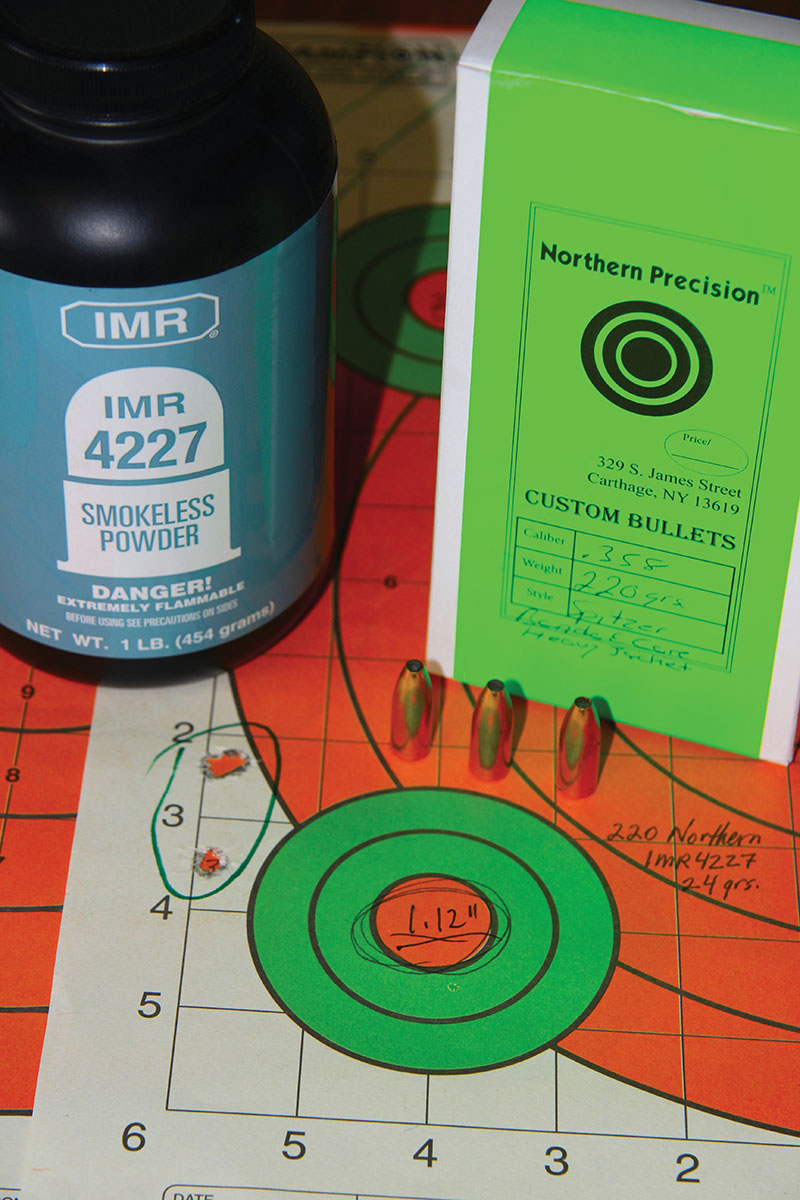
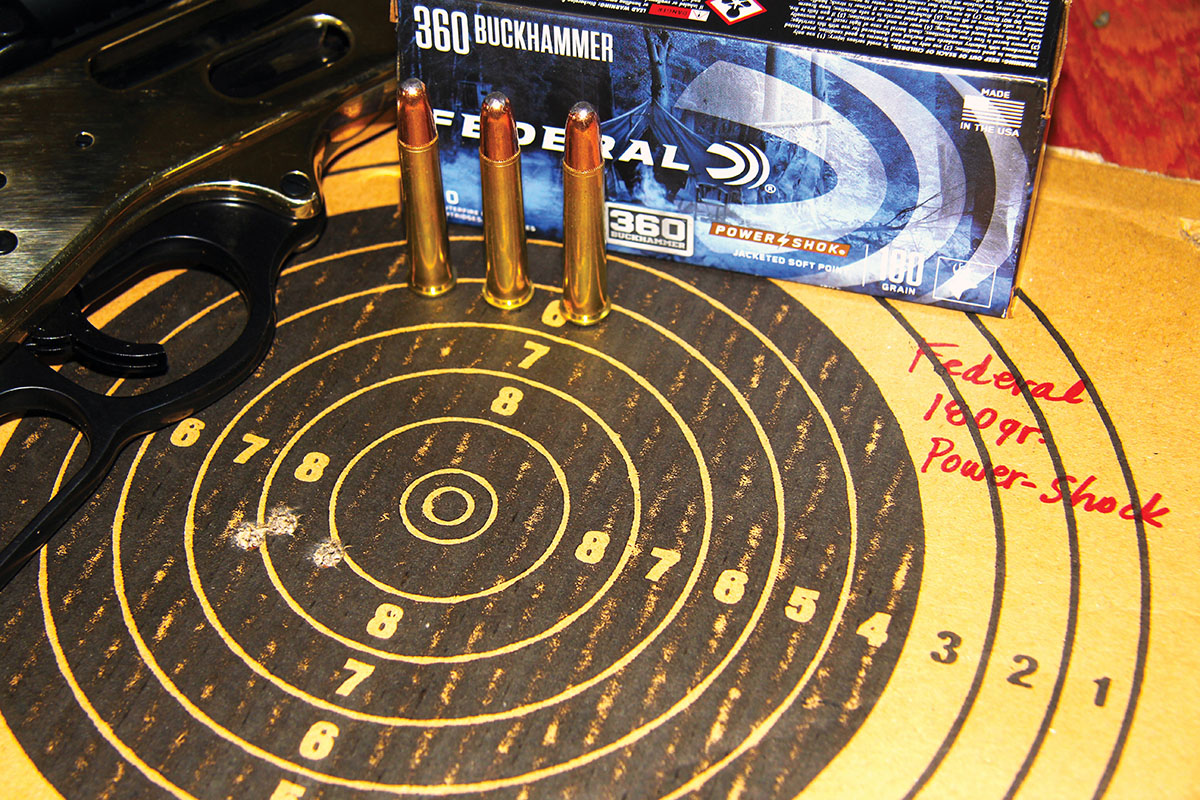
The roundnose bullets make perfect sense when you understand the 360 Buckhammer was developed in partnership with Henry Repeating Arms, manufacturers of fine lever-action rifles with tubular magazines. Henry also offers a break-action single-shot rifle, that knowledge factoring in the loads offered here. The usual new-cartridge naysayers will no doubt ask why the Buckhammer is necessary when the 35 Remington has been getting the job done for centuries. Well, there is that 100 to 150 fps advantage, but the straight-walled 360
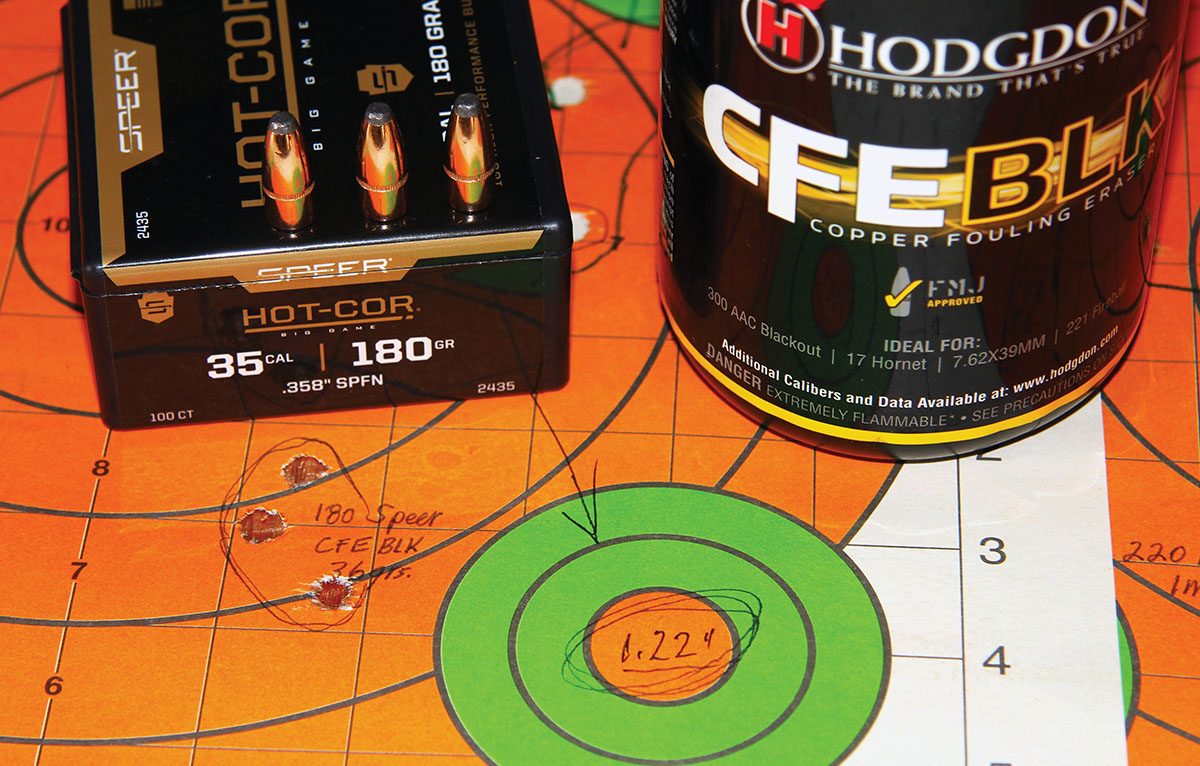
Henry’s handsome Model H024 Side Gate Lever Action Rifle certainly offers that. It was introduced in 2019, creating a modern interpretation of the brass-receiver, tube-loading Henry 1860. The hardened brass receiver is robust and aesthetically pleasing, while the brass buttplate and barrel band accent the blued barrel and bolt. The Side Gate sports a quality American walnut buttstock (14-inch length of pull) and forearm, both holding deep and intricate checkering. The iron sights consist of a fully-adjustable, semi-buckhorn rear sight dovetailed and secure by a set screw and an ivory front bead screwed onto the round 20-inch blued steel barrel.

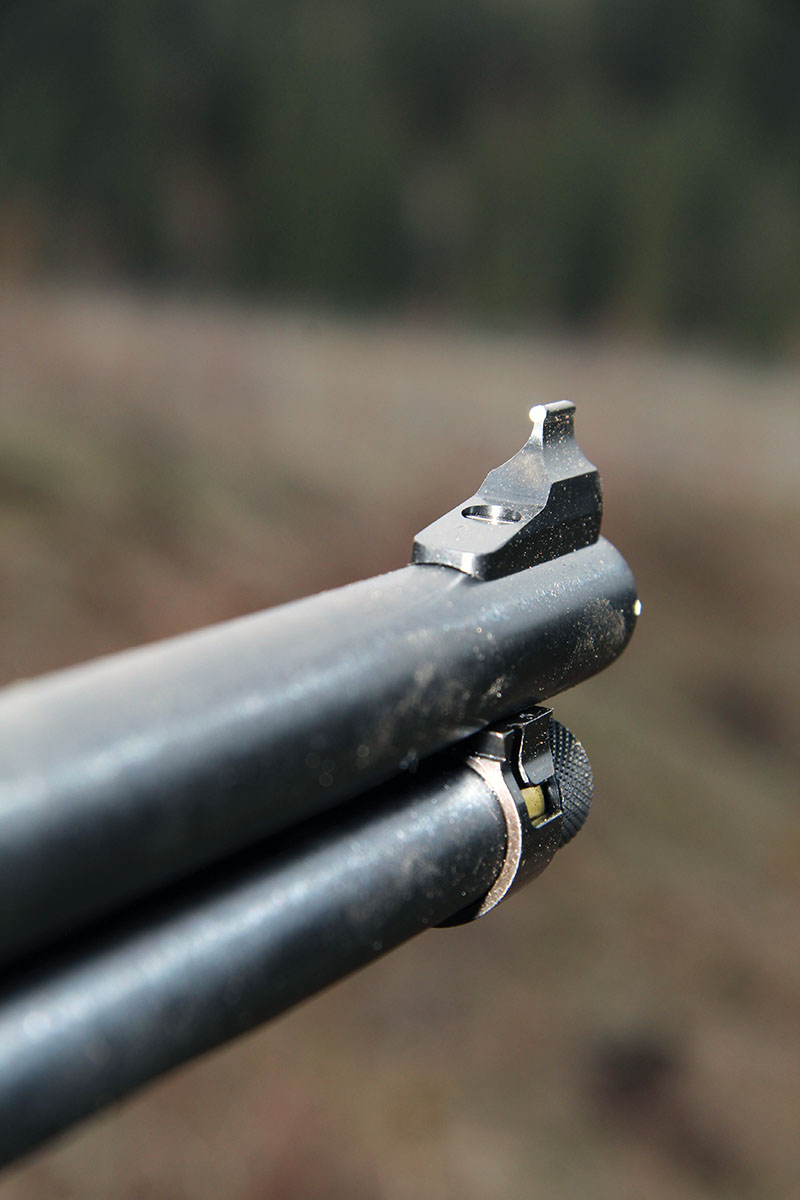
The Side Gate is available in 38-55 Winchester, 30-30 Winchester, 45-70 Government, 35 Remington, and the newly-released 360 Buckhammer, the latter was added in 2023. The rifle measured 38.3 inches overall and weighed 7.5 pounds as delivered and 9 pounds with the Skinner Optics 1-6x 24mm Gen 2 scope mounted in Skinner Sights’ 1895 package hardware.
The Skinner Optics 1-6x 24mm gen 2 riflescope from Skinner Sights was added in the interest of producing tighter groups during accuracy testing. An upgrade from the original, this compact riflescope seemed a natural fit for this fast-handling rifle. It includes a straight 30mm tube and all-metal construction. The magnification ring holds a knurled-post throw lever and the center-dot ballistic reticle includes 11-position illumination. The windage and elevation turrets are covered and include .50-MOA movements. The clear glass is protected by front and rear spring-loaded pop-up caps. The Picatinny base and medium four-hole rings provided by Skinner Sights proved a perfect fit, though the rear semi-buckhorn sight had to be removed for clearance. This proved an easy operation: remove the set screw and gently tap it sideways with a brass punch until it clears the dovetail cut.
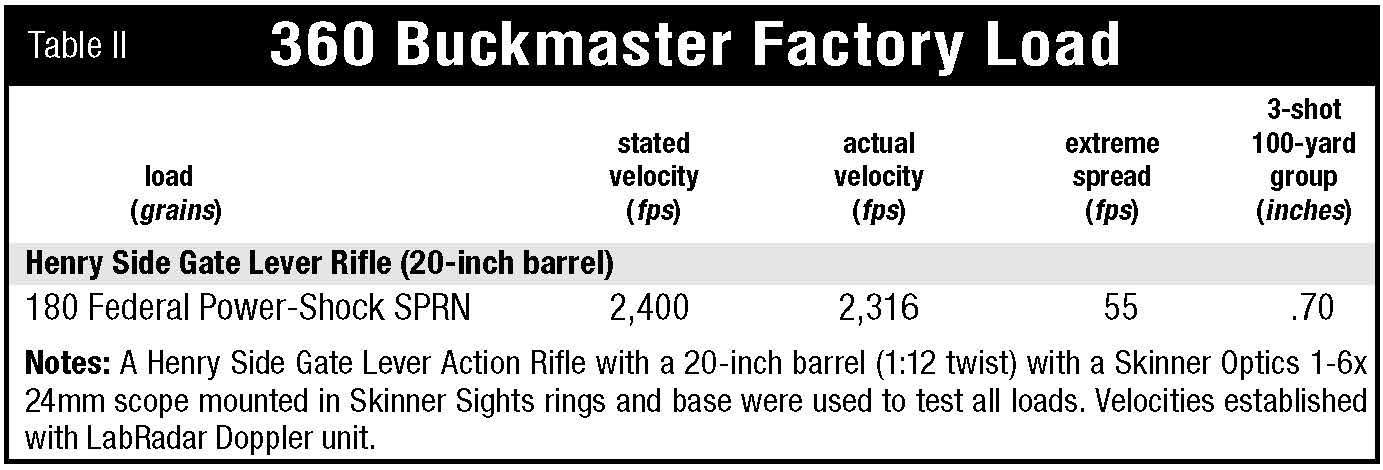
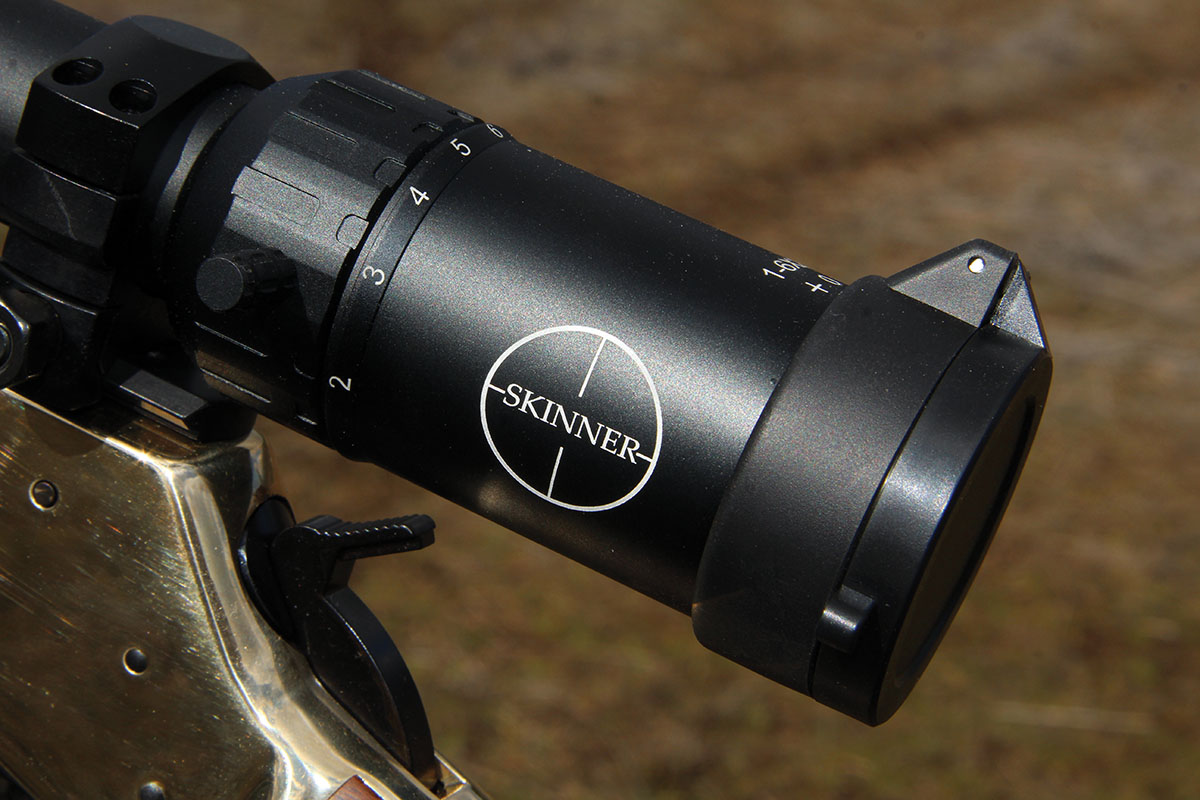
Loading the Side Gate was simple, disengaging the inner magazine tube/spring-loaded follower and sliding it upward to expose a bottom cartridge cut-out, dropping rounds in rim first before resecuring the inner tube – or utilizing the side gate, dealer’s choice. The side gate also makes it easier to top off the magazine after firing several rounds. The removable tube design also makes unloading the rifle safer, dropping rounds out of the tube instead of the need to run the lever to eject every round.
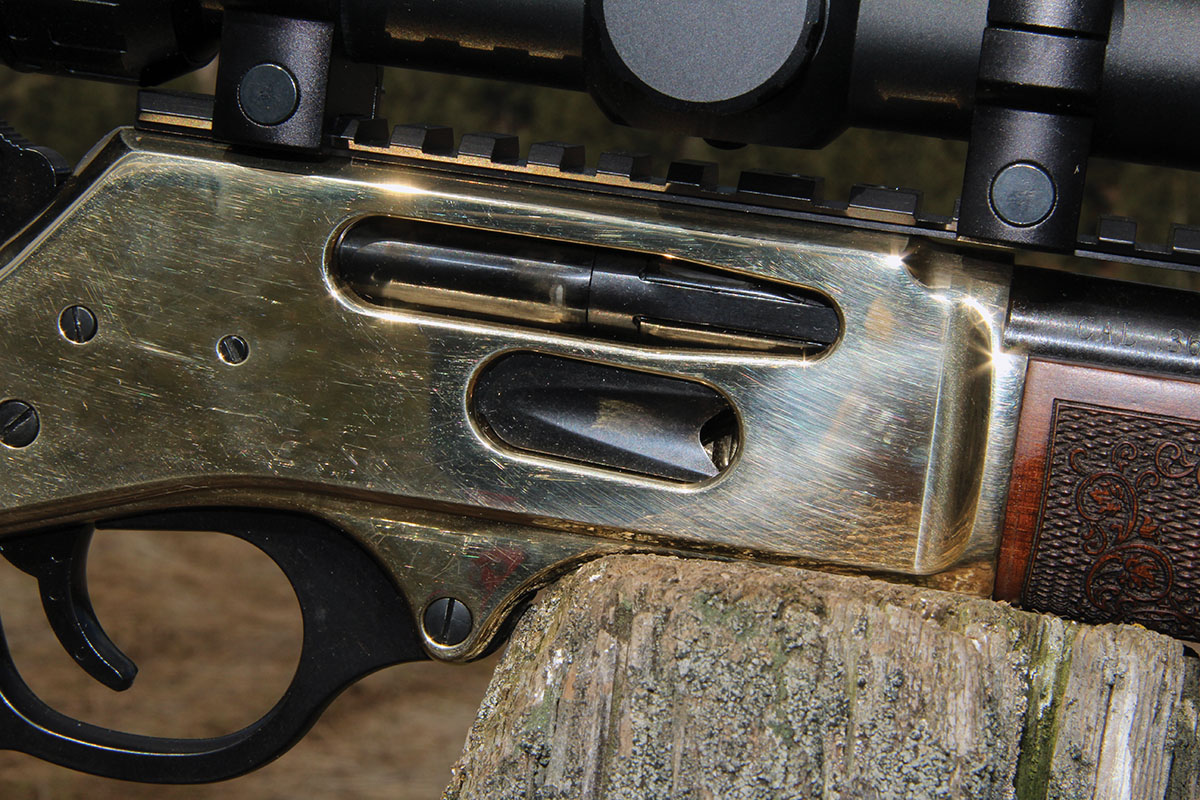
Disassembly for thorough cleaning is conducted much the same as the familiar Marlin Model 336. Henry recommends cleaning the bore from the breech end, which requires removing the bolt. This is easily accomplished by pulling the lever down until it stops, removing the screw securing the lever to the receiver, removing the lever, and then the bolt through the rear of the receiver. This resulted in the ejector falling free, something to keep in mind, as the ejector must be put into its provided groove before reassembly. The bolt will capture the ejector when slid back into the receiver.
The Side Gate holds a round 20-inch barrel in all chamberings, and in the 360 Buckhammer, it includes a cut, right-hand 1:12 rifling twist sufficient to fully stabilize any .358-caliber bullet. The rear semi-buckhorn sight is both windage and elevation adjustable and the ramped front sight holds a highly-visible .062-inch-diameter ivory bead. The rifle’s flat-top/side-eject styling is drilled and tapped for easy scope attachment, with four screws holding a Picatinny rail like that supplied by Skinner Sights for convenient scope mounting.
As far as levergun triggers go, the Henry’s system proved satisfactory. The rifle’s trigger broke a few ounces short of 6 pounds, with just a bit of creep and overtravel. Loading through the side gate proved smooth, reliable and the system was polished and free of sharp edges. The lever action also proved slick and free of even a hint of binding, it posed no problems throughout testing, promising fast cycling in the field without pulling the rifle from the shoulder.
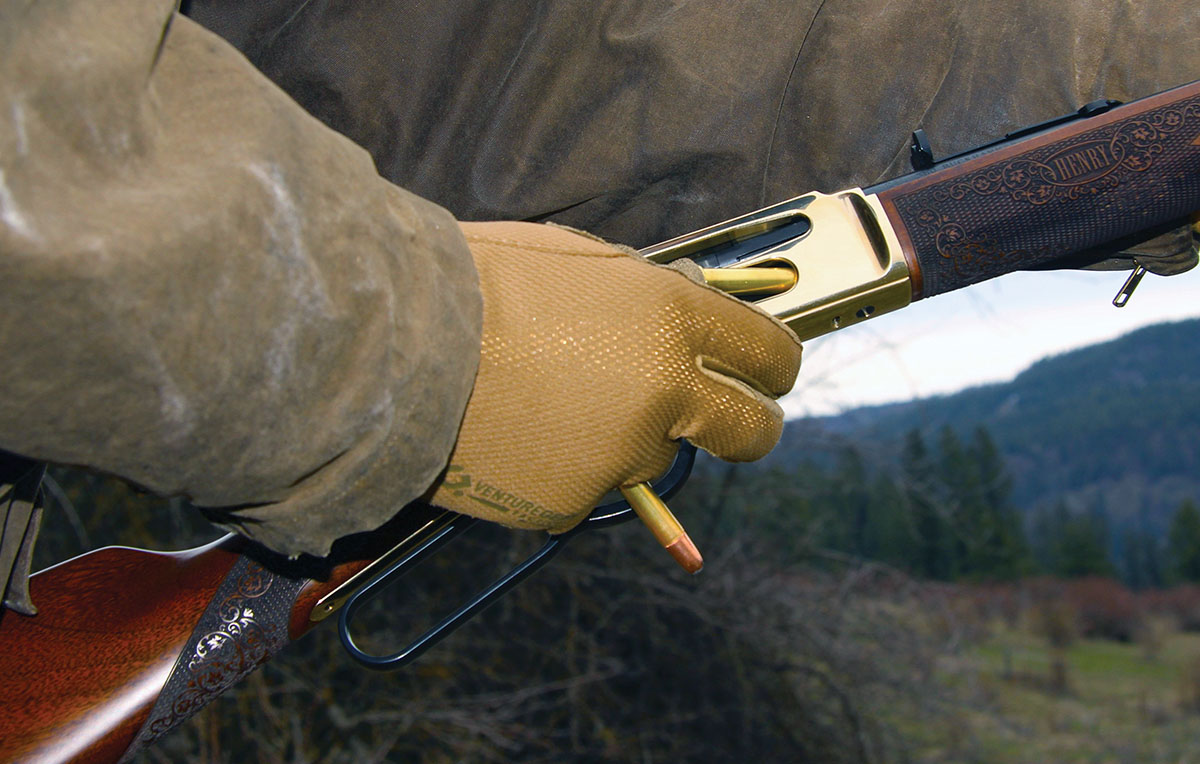
As a handloading project, the only way to currently secure brass is to purchase factory ammunition and fire away. MidwayUSA, which typically stays abreast of the newest developments, currently lists 200-grain Power-Shock (I received 180-grain Power-Shock factory ammunition directly from Federal) plus 180- and 200-grain Core-Lokt options from Remington. As of print time, dies were available from Lee Precision, RCBS and Redding (Redding Series B dies were used for loading here). I used plain-Jane Federal Ammunition No. 210 Large Rifle primers in the selected handloads.
I loaded what .358-caliber bullets I could find to explore handload options. Northern Precision supplied a 150-grain cast lead roundnose with Base Guards (which he advised not running above 1,400 fps), a 200-grain Bonded Core Spitzer and 220-grain Bonded Core Heavy Jacket Spitzer. The pointed Northern Precision bullets were single loaded in diffidence to the Henry’s tubular magazine, but would prove ideal for Henry’s single-shot rifle option. I had a box of Blue Bullets’ coated 158-grain SWC on hand intended for the 357 Magnum, but they miked out at .358 inch, so those were included for mild plinking rounds. I also pulled some Federal 180-grain Power-Shock bullets from factory ammunition to test Accurate No. 11 FS. Finally, Speer’s 180-grain Hot-Cor softpoint flatnose (SPFN) provided a proper levergun bullet.
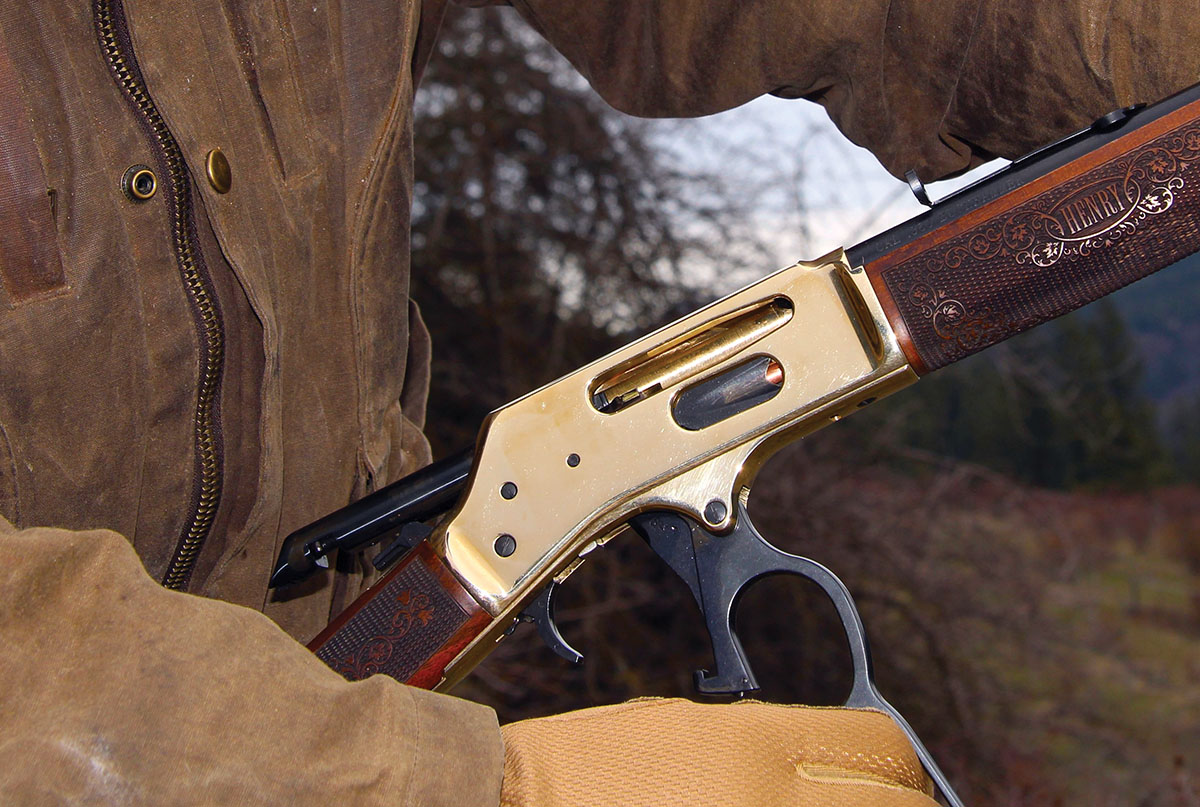
Compatible powders were typical of straight-walled cartridges in this class, fast burners such as Accurate 5744 and 1680, and Hodgdon CFE BLK and IMR-4227, with Trail Boss used for the 158-grain plinker load. Attempting to match factory velocities, particularly with the heavier bullets, resulted in flattened primers and sticky extraction, so loads were reduced accordingly.
The two light bullets were true experiments, basing charges on 350 Legend load data to avoid getting myself into trouble. These would make great options for shooting cans with the kids or hunting small game such as rabbits. Fifty-yard accuracy was good with the Northern Precision 150-grain Base Guard roundnose cast lead bullet, but dismal with the 158-grain Blue Bullet. The real load testing began with Speer’s 180-grain Hot-Cor SPFN, which is ideal for the big game this cartridge was designed to address. The two Northern Precision bullets should serve well as a reference for similar-weight bullets, for Henry’s single-shot rifle or bolt rifles sure to emerge, but should not be loaded in lever-action tubular magazines in the interests of safety.
The 360 Buckhammer’s mild nature came as a welcomed surprise. I expected some recoil, but even locked over a bench, this rifle was a pleasure to shoot. It also proved relatively accurate – not varmint-shooting accurate, but offering plenty of precision for big game addressed in intimate woods settings. Engaging water-filled cans scattered from 50 to 100 yards offhand resulted in satisfying eruptions – and plenty of trash to collect.



